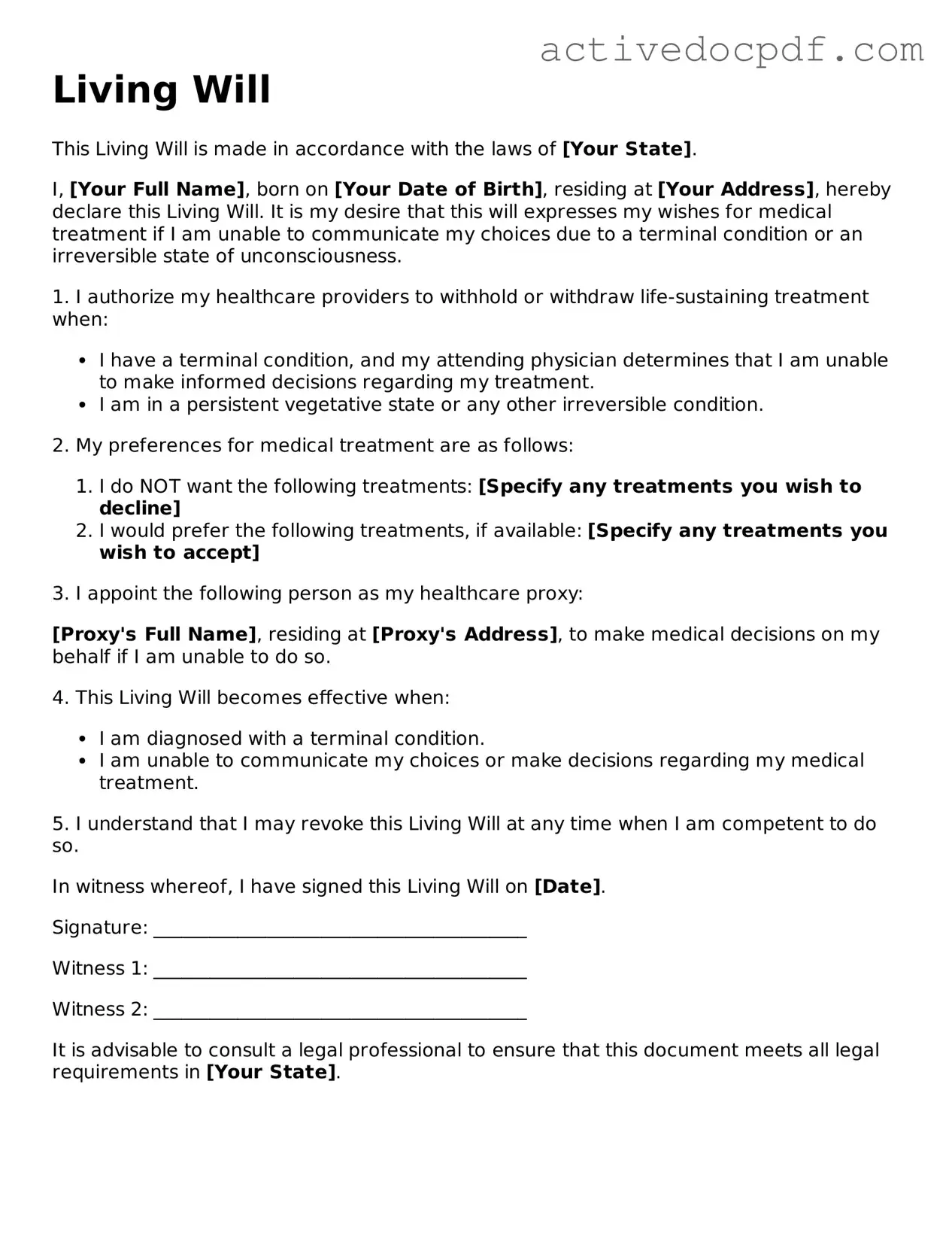What is a Living Will?
A Living Will is a legal document that outlines your preferences for medical treatment in case you become unable to communicate your wishes. It typically addresses situations like terminal illness or severe incapacitation.
Why do I need a Living Will?
A Living Will ensures that your healthcare preferences are respected. It can relieve your family from making difficult decisions during emotional times and can prevent conflicts among loved ones regarding your care.
Who can create a Living Will?
Any adult of sound mind can create a Living Will. You do not need to be a lawyer, but it’s advisable to consult one to ensure that your document complies with state laws.
What should I include in my Living Will?
Consider including the following:
-
Your preferences for life-sustaining treatments, such as resuscitation and artificial nutrition.
-
Specific situations in which you would or would not want certain treatments.
-
Any other personal wishes regarding your medical care.
Is a Living Will the same as a Durable Power of Attorney for Healthcare?
No, they are different. A Living Will outlines your treatment preferences, while a Durable Power of Attorney for Healthcare designates someone to make medical decisions on your behalf if you are unable to do so.
How do I create a Living Will?
You can create a Living Will by following these steps:
-
Determine your wishes regarding medical treatment.
-
Consult a legal professional to draft the document.
-
Sign the document in the presence of witnesses, as required by your state.
-
Distribute copies to your healthcare providers and family members.
Can I change or revoke my Living Will?
Yes, you can change or revoke your Living Will at any time. To do so, simply create a new document or provide a written notice to your healthcare provider and family members about your decision.
Do I need a lawyer to create a Living Will?
While it is not legally required to have a lawyer, consulting one is highly recommended. A lawyer can help ensure that your Living Will complies with state laws and accurately reflects your wishes.
Where should I keep my Living Will?
Store your Living Will in a safe but accessible place. Inform your family and healthcare providers where it is located. Consider giving copies to your primary care physician and any designated healthcare agents.
What happens if I don't have a Living Will?
If you do not have a Living Will, medical decisions may be made by your family or healthcare providers based on what they believe you would have wanted. This can lead to confusion or disagreements among loved ones during difficult times.
